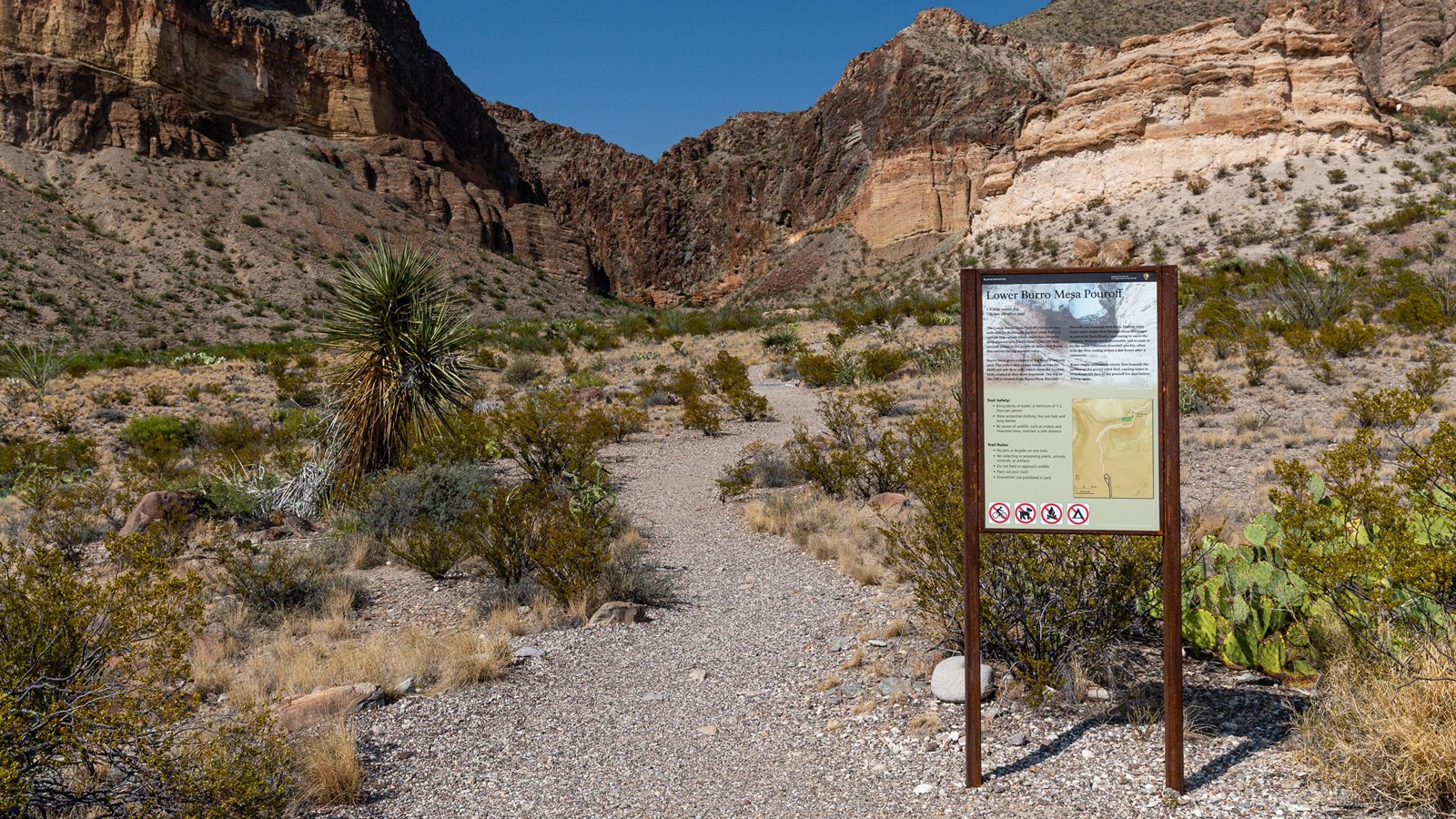Last updated: April 3, 2021
Place
Lower Burro Mesa Pouroff Trail

NPS/CA Hoyt
Quick Facts
Location:
11 miles from the northern end of the Ross Maxwell Scenic Drive.
Significance:
Geology
Amenities
2 listed
Parking - Auto, Trailhead
Trail Information
Roundtrip Distance: 1.0 mile (1.6 km)Elevation Change: 120 feet (36 m)
Average hiking time: 30 minutes
Dogs and other pets are not allowed on any trails in the park.
The Lower Burro Mesa Pouroff Trail is a relatively flat, easy hike to a pouroff that is dry most of the year. A good portion of the trail follows a gravel wash lined by Mexican persimmon, Mexican buckeye, and desert hackberry trees. The wash is bounded by volcanic hills with layers of yellow and orange ash-flow tuffs. Large congomerate boulders litter the valley bottom. The trail ends at the pouroff—a 100-foot tall vertical channel carved into rock that funnels water from the mesa above.
During the rainy season, flashfloods may race down the wash. Be careful and don't get caught in the canyon during a storm.
Accessibility
The upper part of the trail is a fairly flat dirt and rock path. After about 0.25 miles, the trail descends into the wash via a series of uneven steps. The wash is gently-sloped, coarse sand and gravel.The trailhead is at the end of a paved road. Sixteen pull-in parking spaces and one handicap spot offer plenty of parking.
Hike Smart
Bring plenty of water!Carry 1 liter of water per person per hour that you plan to hike. The importance of carrying enough water in this hot, dry climate cannot be overstated!
Eat
Your body needs food for energy and salts and electrolytes to replace what it's losing from perspiration. The dry climate at Big Bend means that sweat often evaporates almost instantly; your body is likely losing lots of moisture and salts without you even realizing it. Eat plenty of salty snacks to keep your body's salt-to-water ratio in balance.
Sun protection
Carry sunscreen and use it liberally. Hats are also strongly recommended. It may seem strange to wear long-sleeved shirts and pants in hot weather, but many hikers choose lightweight, breathable clothing which covers their arms and legs to protect themselves from the sun.
Don't leave people behind
If you're hiking in a group, make sure the person in the back always has someone to help.
Be aware of wildlife
Keep an eye out for snakes, and remember to maintain a safe distance between yourself and all wildlife. Animals in the park are wild and should never be approached, harassed, or fed.
Don't stack rocks
Cairns are stacks of rocks which are sometimes used to mark trails in areas where they are hard to follow. Randomly stacked rocks can lure hikers off the correct trail.
